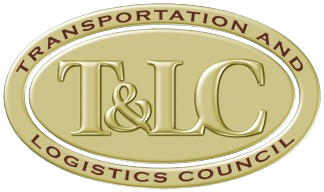DOL Proposes its First-Ever Interpretation on Independent Contractor vs Employee
For decades, companies have wrestled with whether certain workers must be treated as employees subject to various employment laws and company rules or whether they are classified as independent contractors with different terms of work, pay and tax consequences.
On September 22, 2020, the U.S. Department of Labor (DOL) released a proposed rule to determine independent contractor status under the Fair Labor Standards Act (FLSA). The proposal is expected to be published in the Federal Register later this week or early next week.
What the DOL’s Proposal Does
Those hoping for a basic simple rule on who is an employee and who isn’t will be disappointed by the DOL’s proposal, because it still involves a several factor test. Those hoping for the common law right to control test (which is used by the IRS) also will be disappointed, because the DOL did not adopt that either.
The DOL believes Supreme Court precedence requires it to continue to adhere to the “economic realities” test. Under the proposal, a court must evaluate whether a worker is “economically dependent” on an employer or is in business for him/herself.
Thusly, it would benefit a motor carrier not to have “on-going” relationships and to make sure the IC truly in business by verifying business cards and advertising.
The DOL’s proposal – which would be codified at 29 CFR §795.100 through .195- first would elevate two “core factors” from the economic realities test above all others.
- The nature and degree of an individual’s control over the work; and
- The individual’s opportunity for profit or loss.
If both factors point toward the same classification, whether it be employee or independent contractor, “there is substantial likelihood that is the individual’s accurate classification.
If they point in opposite directions, then the three “other factors” come into play and may tip the scale to one or the other.
These are:
- The amount of skill required for the work;
- The degree of permanence of the working relationship between the individual and the potential employer; and
- Whether the work is part of an integrated unit of production.
As proposed, this factual inquiry will emphasize the actual practice between the parties rather than what is contractually or theoretically possible. These secondary factors could present challenges to maintaining independent contractor status base on some existing case law addressing driver work classification under various state laws.
The proposal contains certain specific guidance to assist companies in determining whether they can engage in certain workplace practices to enhance the safety of all employees while holding workers to certain final results in requirements in terms of quality and timeliness of provided services. It makes clear that requiring an individual to comply with specific legal obligations, satisfy health and safety standards, carry insurance, meet contractually agreed-upon deadlines or quality control standards, or satisfy other similar terms that are typical of contractual relationships between businesses does not render a worker more or less likely to be an employee.
Such guidance likely will help franchisors in particular, who maintain that some level of control is inherent in a true franchise relationship and actually is required under the Federal Trade Commission’s Franchise Rule, 16 CFR §436.1 and Federal Trademark Law, 15 USC §1127.
It also provides that the opportunity for profit of loss isn’t limited to a worker’s capital investment and can include the exercise of initiative, such a managerial skill or business judgment. It dispels the notion that a “long-term” worker is more likely to be an employee by stating that such a factor weighs in favor of employee status “to the extent the work relationship is instead by design indefinite in duration or continuous.”
Perhaps most significantly, and in contrast to interpretations of the ABC test under California and some other state’s wage-hour laws, the proposal substantially would reduce reliance on the extent to which a worker’s services are “integral” to, or an essential part of, the putative employer’s business. In a section helpful to companies that provide a platform or marketplace for customers to be matched with workers who desire to provide services, the DOL persuasively explains in the preamble to its proposal why such a formulation is inappropriate in determining whether a worker is economically dependent on, and thus an employee of, a company. In its place, the DOL proposes to inquire whether a worker’s activities are “a component of the potential employer’s integrated production process for a good or service,” further explaining that a worker is more likely to be a contractor when the work is “segregable from the potential employer’s production process.”
Indeed, in the preamble explaining the proposal, the DOL noted that, under this test, “discrete, segregable services for individual customers is not part of an integrated unit of production” and provided an example of workers who provide services to a virtual marketplace company’s individual customer. The proposal further stresses that this factor should not be confused with “the concept of the importance or centrality of the individual’s work to the potential employer’s business.”
Finally, in a subsection that may assist employers in defeating or limiting collective action certification, the DOL’s proposal stresses that “the actual practice of the parties involved is more important than what may be contractually or theoretically possible.” Thus, a worker’s theoretical ability to negotiate prices or work for a competing business doesn’t move the needle much toward contractor status if those don’t happen. On the other hand, the mere contractual authority to supervise or discipline a worker is of little relevance in deeming a worker an employee if that authority isn’t exercised.
The Limits of the DOL’s Proposal
The DOL’s proposal is far from a cure all for companies seeking absolute clarity on a worker’s status under the FLSA. Under the proposal, the definition of employee becomes more clear, but it remains fairly broad and will continue to be applied based on the particular facts of any case. And there are some instances where a company may have more difficulty in classifying a worker as a contractor where that worker does not have an opportunity for profit or loss.
If finalized, the proposal must be kept in perspective. Unlike some other recent DOL rules, such as on the minimum salary for the white-collar exemptions, this DOL rule is an interpretive guidance. Courts have the final say on who is an employee and who is an contractor, and they must give a DOL interpretation such as this one Skidmore deference, which is based on how persuasive each judge finds this guidance.
Further, to the extent that this proposal is applied by courts, it is applicable only under the FLSA. Differing definitions of “employee” will continue to exist under other federal employment statutes. More significantly, several state overtime and other wage-hour laws, some of which use the ABC test to determine employee vs. contractor status, are unaffected by the DOL’s proposal.
What Happens Next
Whether the rule becomes finalized and effective remains to be seen. The DOL announced a 30-day comment period that will commence upon formal publication of the proposal, which likely occur on Friday. Once comments are submitted, the DOL must consider them and then prepare a final rule. It is not clear whether that can be accomplished before Inauguration Day and whether a different administration would continue to pursue this proposal. It also is possible that the rule could be subject to rejection under the Congressional Review Act, a possibility if the Senate majority changes parties and the administration changes. It also is possible that a coalition of state attorneys general will seek an injunction against the rule, similar to the one recently granted by a federal district judge against a recent DOL interpretation on the definition of joint employer.
Only time will tell. This is why it is so important to become an NTA member so your always up to date on the things that affect your life and livelihood.
Content Disclaimer: Due to the constantly changing nature of government regulations, it is impossible to guarantee the total and absolute accuracy of the material contained herein or presented. NorthAmerican Transportation Association (NTA) cannot and does not assume any responsibility for omissions, errors, misprinting or ambiguity contained. NTA shall not be held liable in any degree for any loss, damage or injury caused by any such omission, error, misprinting or ambiguity present. It is made available with the understanding that NTA is not engaged in rendering legal, accounting or other professional service. If legal advice or other expert service is required, the services of such a professional should be sought.











